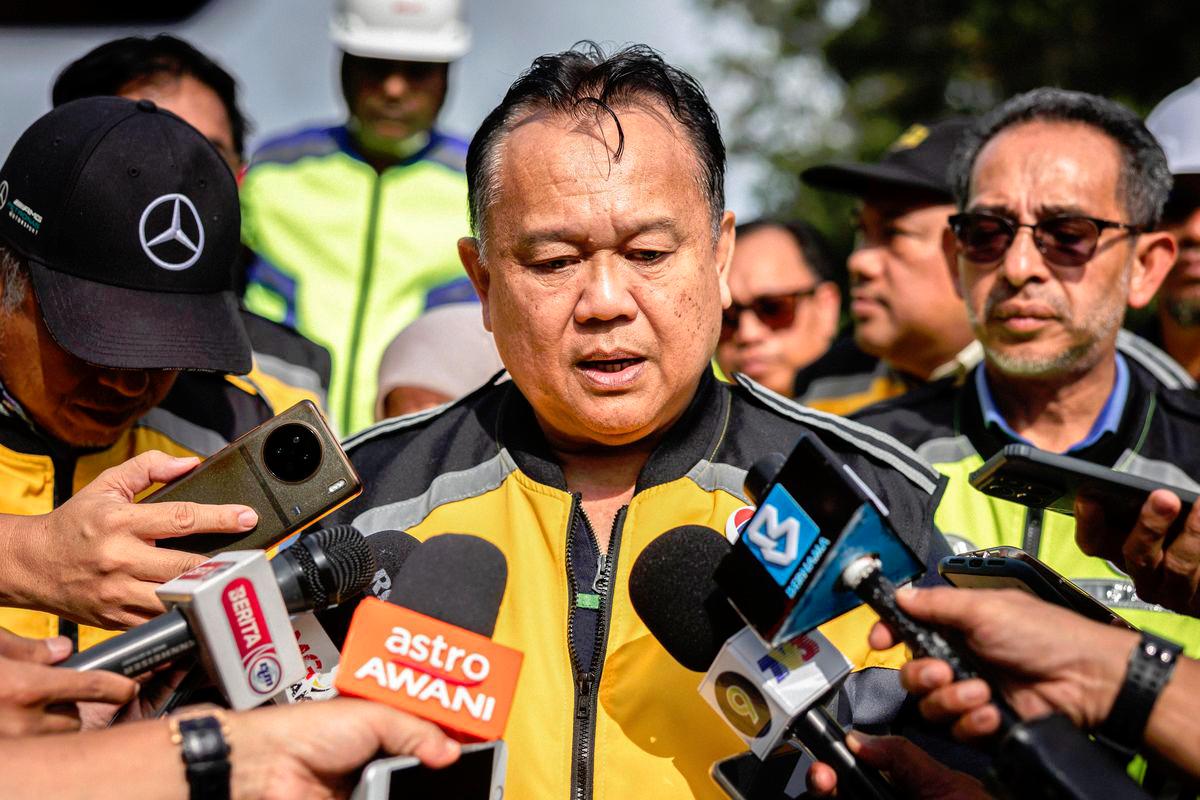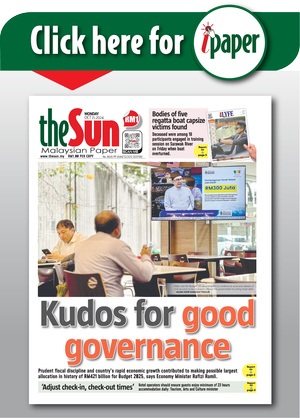KOTA BHARU: The horrific accident that claimed the lives of 15 Universiti Pendidikan Sultan Idris students on June 9 has turned the East-West Highway (JRTB) into a focal point for people across the country, with many describing the over 40-year-old highway as one of the most challenging roads they have ever travelled on.
The narrow, winding road is often criticised for its many hazards, including the absence of warning signs, faded road markings, poor street lighting and the added danger of wandering wildlife.
According to police statistics, 3.14 million road accidents – an average of 1,720 a day – were recorded nationwide over five years from 2019.
However, experts have made it clear that road conditions and infrastructure are not entirely to be blamed for crashes.
According to the Malaysian Institute of Road Safety Research, more than 80 percent of road accidents are caused by human behaviour, while infrastructure and road conditions account for only 13 percent.
Highlighting the fact that only 13 percent of accidents are due to road and infrastructure conditions, the Ministry of Works, via its social media platforms, stressed that it has never neglected the maintenance of roads and infrastructure under its jurisdiction.
The ministry said the Public Works Department (JKR) is responsible for maintaining approximately 15,000 kilometres (km) of federal roads all over Peninsular Malaysia. Between 2023 and May 9 this year, the ministry spent a total of RM5.49 billion on the maintenance of federal roads.
JRTB STILL SAFE FOR USE
In the context of JRTB – which connects Gerik, Perak, in the west to Jeli, Kelantan, in the east – it is part of Federal Route 4 (FT4), with a total length of 292.39 km, covering 61.78 km in Kedah, 114.66 km in Perak and another 115.95 km in Kelantan.
According to Works Minister Datuk Seri Alexander Nanta Linggi, based on the latest traffic census in 2024, the two-lane single carriageway remains at a good level of service, with its current configuration able to accommodate present traffic volume.
“Physically, the JRTB is in good condition and safe for use,” he told Bernama in a statement recently, adding the road is classified as hilly terrain, with its alignment designed to follow the contours and topography of the Titiwangsa mountain range.
(The minister’s statement was in response to questions submitted by Bernama, following two special reports related to JRTB published by the news agency in June.)
Nanta said the highway, which was opened to the public on July 1, 1982, observed a daily traffic volume of 2,409 vehicles, including 751 heavy vehicles which make up 31.2 percent.
Acknowledging that the high number of heavy vehicles warrants the construction of an overtaking or climbing lane, the minister said in addition to routine, periodic and non-periodic maintenance, JKR – through its appointed concession company – also carries out repairs along FT4 as needed, such as pothole patching, which must be completed within 24 hours once detected or reported.
SHORT, LONG-TERM PLANS
Taking into account the government’s budget constraints and the current financial capacity, Nanta said his ministry has formulated both short- and long-term plans to ensure that maintenance and upgrades of JRTB can be carried out in phases and a high-impact and sustainable manner.
He said a special allocation has been set aside under the national budget for upgrading JRTB, with key priorities including road lighting, resurfacing and improvements to safety systems, particularly in high-risk areas.
“For the short-term plan in 2025, a total of RM55 million has been allocated for repair works along JRTB, and implementation began in April, with completion expected by early November this year.
“Of that amount, RM35 million was approved for road resurfacing works at critical locations, while RM14.5 million is allocated for non-pavement works such as the replacement of guardrails, installation of warning signs at dangerous bends, construction of drains and repainting of bridge railings,” he said.
He added that RM3.59 million has been allocated for upgrading the lighting system through the installation of solar-powered street lights in dark or high-risk areas, such as sharp bends and zones near residential areas.
“Apart from that, RM1 million has been set aside for the implementation of a pavement condition assessment along the entire FT4 section in Perak.
“The data gathered from the assessment will serve as the basis for determining the actual extent of damage, the appropriate pavement treatment and the prioritisation of locations requiring repair,” he said.
SMART TECHNOLOGY
Meanwhile, JKR director-general Datuk Roslan Ismail, in the same statement, said the department has identified 16 accident-prone spots along JRTB since 2018.
To address this, JKR has implemented the blackspot treatment programme under its Road Safety Infrastructure Upgrade initiative, based on the principle of low-cost, high-impact.
“Under this principle, if the treatment method applied is appropriate for the type of accident occurring, the accident rate at that location (blackspot) can be reduced at a relatively low cost,” he said.
Based on analyses, he said, common issues at most of the treated blackspots include dilapidated and insufficient signage; faded road markings; inadequate lighting and delineation at night; limited visibility due to winding road geometry; and damaged road surfaces.
To improve monitoring efficiency along FT4, particularly the Baling–Jeli stretch, Roslan said JKR, through its appointed concession company, is employing smart technology specifically developed to support federal road maintenance through digital and automated systems.
One of the core smart functions of the application involves the automatic detection of potholes using cameras and artificial intelligence (AI) technology installed on patrol vehicles such as motorcycles or four-wheel drive vehicles.
“This system works by capturing images of the road surface during daily patrols, with AI detecting potholes based on irregular patterns, shapes and textures.
“Once a pothole is detected, the location of the damage is automatically recorded using GPS and transmitted to the application for verification by patrol officers.
“After verification, the system will automatically issue a work order to the patching subcontractor concerned, who will receive complete location details through the app, including images and coordinates, and carry out repairs accordingly,” he said.
Roslan added that this method significantly reduces detection and information delivery time compared to the previous manual process. It not only speeds up repair works but also improves data accuracy, reduces reliance on written reports and streamlines the work monitoring system.
“The technology reflects a ‘digital-first’ approach in road maintenance management, in line with the ministry and JKR’s objective to expand the use of smart systems and automation in public infrastructure maintenance,” he added.
SHARED RESPONSIBILITY
Roslan also said that for the long-term plan to upgrade JRTB, the department has submitted a new proposal under the First Rolling Plan of the 13th Malaysia Plan (2026-2030), with priority given to the most critical sections, specifically the 114.66-km stretch in Gerik, Perak, and 46.5-km section in Jeli, Kelantan.
“Proposed scopes include building overtaking or climbing lanes at selected locations, renewing road markings and upgrading culverts,” he said, adding there are also long-term proposals involving comprehensive and high-cost works such as realignment at dangerous bends along the road, upgrading existing road safety facilities, and building wildlife crossings.
Meanwhile, Nanta urged the public to support road maintenance initiatives by providing constructive feedback to improve service quality, stressing that safe and quality road infrastructure is a shared responsibility that begins with user awareness and care.
“My main advice to the public is to obey speed limits and all road regulations. Heavy vehicles, in particular, are advised to use designated routes as using regular roads can accelerate road surface deterioration.
“In addition, users are encouraged to report any road damage or hazard, such as potholes, landslides or damaged signboards, to the authorities so that immediate action can be taken,” he said. - Bernama









